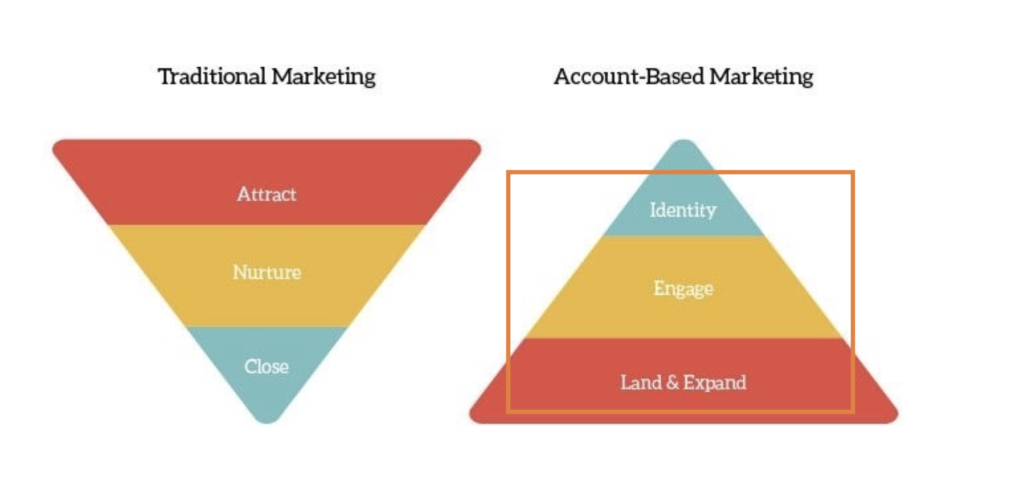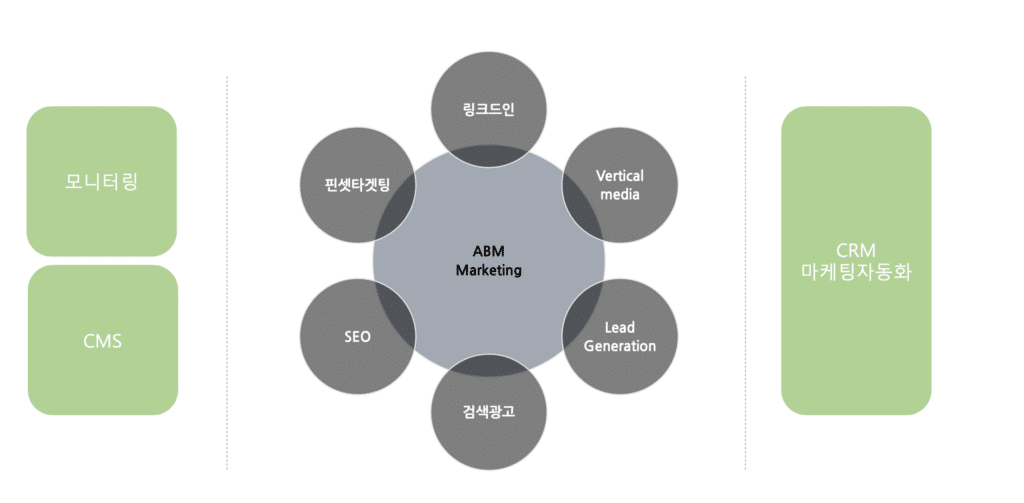Table of Contents

Why ABM (Account-Based Marketing) is Essential in B2b Marketing
ABM (Account-Based Marketing) is an essential area in B2B marketing.
What if you don’t use ABM-based marketing? You’d have to market to a broad target audience and then filter through the collected customers to identify your true customers.
Since B2B marketing encompasses various fields, this method might be somewhat effective for products or services with a relatively broad target audience.
However, for the Autodesk partners I trained this time, their business focuses on a highly specialized market: CAD (Computer-Aided Design) software.
Therefore, approaching it with ABM marketing can be much more effective than general marketing.

Is there a Way to Do ABM Marketing Digitally?
The core of this marketing training was to introduce various ways to implement ABM marketing digitally.
There are two perspectives for ABM marketing. One is understanding it from a CRM perspective, and the other is understanding it from a targeting concept.
If you understand ABM marketing centered on CRM, it leads to personalized marketing focused on customer segmentation.
And if you approach ABM marketing based on targeting, it’s difficult to expand beyond marketing tools like “LinkedIn” or “Sales Navigator”.
ABM marketing cannot only be implemented through CRM tools or LinkedIn.
While ABM marketing can be implemented with CRM software or LinkedIn, this is only a part of the overall ABM marketing perspective.
I believe that to properly understand ABM marketing, you need to understand the four-stage structure below: monitoring, CMS, targeting strategy, and CRM with marketing automation.
Even with just a targeting strategy, you can conduct ABM marketing to some extent, but for sustained growth, it’s best to utilize all four strategies introduced in the image below.
The CRM introduced in this lecture covered methods that can be implemented with HubSpot, which has high global recognition.

Training that Shared both Theory and Detailed Practical Know-How
This lecture was for marketers who are actively working in the field.
Therefore, it was necessary to provide realistic alternatives beyond just offering insights, so I shared detailed know-how on how to apply ABM marketing in practice.
I covered various topics, including LinkedIn targeting strategies, effective lead generation methods, and even Google SEO lecture content, which is in high demand in the current market.
In this training, there were many other detailed aspects to introduce,
however, for practitioners, if a training session exceeds two hours, engagement tends to drop, and the content might become too focused on feature introductions. Therefore, I kept the core content concise.
This training could provide detailed points for improving marketing efficiency for companies already engaged in digital marketing,
and for companies that had previously only conducted offline marketing, it introduced how to approach B2B media mix.


Mistakes B2b Companies Make when First Attempting Digital Marketing
I have experience with event marketing, such as seminars and exhibitions, as well as online B2B marketing.
However, even when conducting offline events, I primarily handled the audience acquisition part, so it seems I’ve mainly focused on marketing to acquire potential customers.
For B2B digital marketing, it’s difficult to achieve significant results with a general media mix strategy.
Even with search advertising, keyword selection is crucial, and various strategies must be employed to check keyword efficiency.
And even when utilizing social media, a more refined marketing strategy, such as ABM marketing-based pinpoint targeting, is needed rather than general targeting.
However, if you start digital marketing without understanding the B2B media mix, you won’t achieve significant results and will revert to your previous marketing methods.
Simply understanding the “ecosystem” of online marketing and the “B2B media mix” can reduce such trial and error.
Here are some Recommended Articles Related to ABM Marketing.
If You Can’t Keep Doing What You’re Doing – Systematically Building B2B Customers
Until the Customer Speaks to Us – Inbound Marketing & Sales (2)
““Data-Driven” Sales” – How to Apply it in Practice?







